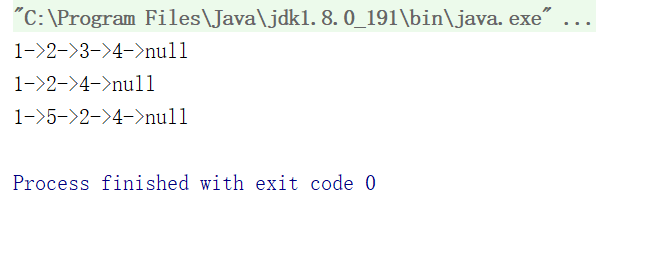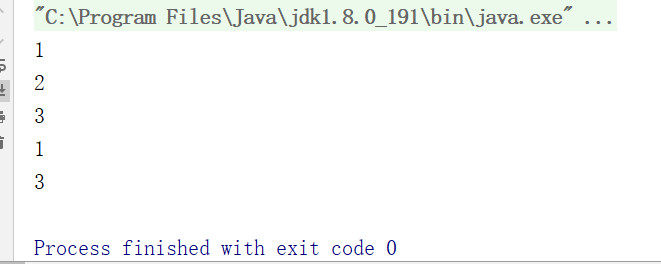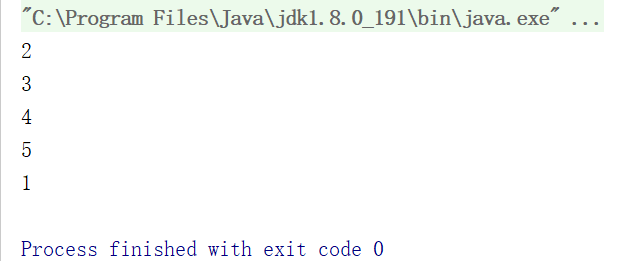数据结构(二)之链表
1.单链表
package cn.liusong.Array;
public class Node {
int data;
Node next;
public Node(int data) {
this.data = data;
}
//为节点追加节点
public Node append(Node node) {
//当前节点
Node currentNode = this;
//循环向后找
while (true) {
//取出下一个节点
Node nextNode = currentNode.next;
//如果下一个节点为null,当前节点为最后的节点
if (nextNode == null) {
break;
}
//赋给当前节点
currentNode = nextNode;
}
//把需要追加的节点到当前找到的节点的下一个节点
currentNode.next = node;
return this;
}
public Node next() {
return this.next;
}
public void show() {
Node currentNode = this;
while (true) {
System.out.print(currentNode.data + "->");
Node newNext = currentNode.next;
currentNode = newNext;
if (currentNode == null) {
System.out.print("null");
System.out.println(" ");
break;
}
}
}
//删除节点
public void removeNext() {
// 取出下下一个节点信息
Node newNext = next.next;
//把下下一个节点的信息给当前节点
next = newNext;
}
//取出节点数据
public int getData() {
return this.data;
}
//插入一个新节点
public void after(Node node) {
//取出下一个节点作为下下一个节点
Node nextNext = next;
//插入新的节点作为下一个节点
this.next = node;
//取出下下一个节点连在下一个节点之后
node.next = nextNext;
}
}
测试链表功能
package cn.liusong.Array; public class TestNode { public static void main(String [] args){ //创建节点 Node n1 = new Node(1) ; Node n2 = new Node(2) ; Node n3 = new Node(3) ; Node n4 = new Node(4) ; Node n5 = new Node(5) ; //追加节点 n1.append(n2).append(n3).append(n4); //显示节点链 n1.show() ; //取出节点 // System.out.println(n1.next().next().getData()); n1.next.removeNext(); n1.show(); n1.after(n5); n1.show(); } }
测试结果

2.双链表
package cn.liusong.Array; public class DoubleNode { DoubleNode pre = this ; DoubleNode next = this ; int data ; public DoubleNode(int data){ this.data = data ; } //增加一个节点 public void after(DoubleNode node){ //当前节点的下一个节点作为下下一个节点 DoubleNode nextNext = next ; //把新的节点作为当前节点的下一个节点 this.next = node ; //把当前节点作为新节点的前一个节点 node.pre = this ; //把下下一个节点作为新节点的后一个节点 node.next = nextNext ; //让原来的下一个节点作为上一个节点的新节点 nextNext.pre = node ; } //下一个节点 public DoubleNode getNext(){ return this.next; } //获取上一个节点 public DoubleNode getPre(){ return this.pre ; } //获取数据 public int getData(){ return this.data ; } }
测试双链表
package cn.liusong.Array; public class TestDoubleNode { public static void main(String[] args){ DoubleNode n1 = new DoubleNode(1) ; DoubleNode n2 = new DoubleNode(2) ; DoubleNode n3 = new DoubleNode(3) ; //追加节点 n1.after(n2); n2.after(n3); //查看上一个,下一个和自己节点的内容 System.out.println(n2.pre.getData()); System.out.println(n2.getData()); System.out.println(n2.next.getData()); System.out.println(n3.next.getData()); System.out.println(n1.pre.getData()); } }
结果

循环链表
package cn.liusong.Array; public class LoopNode { int data; LoopNode next = this; public LoopNode(int data) { this.data = data; } //删除节点 public void removeNext() { // 取出下下一个节点信息 LoopNode newNext = next.next; //把下下一个节点的信息给当前节点 next = newNext; } //取出节点数据 public int getData() { return this.data; } //插入一个新节点 public void after(LoopNode node) { //取出下一个节点作为下下一个节点 LoopNode nextNext = next; //插入新的节点作为下一个节点 this.next = node; //取出下下一个节点连在下一个节点之后 node.next = nextNext; } }
测试循环链表
package cn.liusong.Array; public class TestLoopNode { public static void main(String[] args){ LoopNode n1 = new LoopNode(1) ; LoopNode n2 = new LoopNode(2) ; LoopNode n3 = new LoopNode(3) ; LoopNode n4 = new LoopNode(4) ; LoopNode n5 = new LoopNode(5) ; n1.after(n2); n2.after(n3); n3.after(n4); n4.after(n5); System.out.println(n1.next.getData()); System.out.println(n2.next.getData()); System.out.println(n3.next.getData()); System.out.println(n4.next.getData()); System.out.println(n5.next.getData()); } }
测试结果




